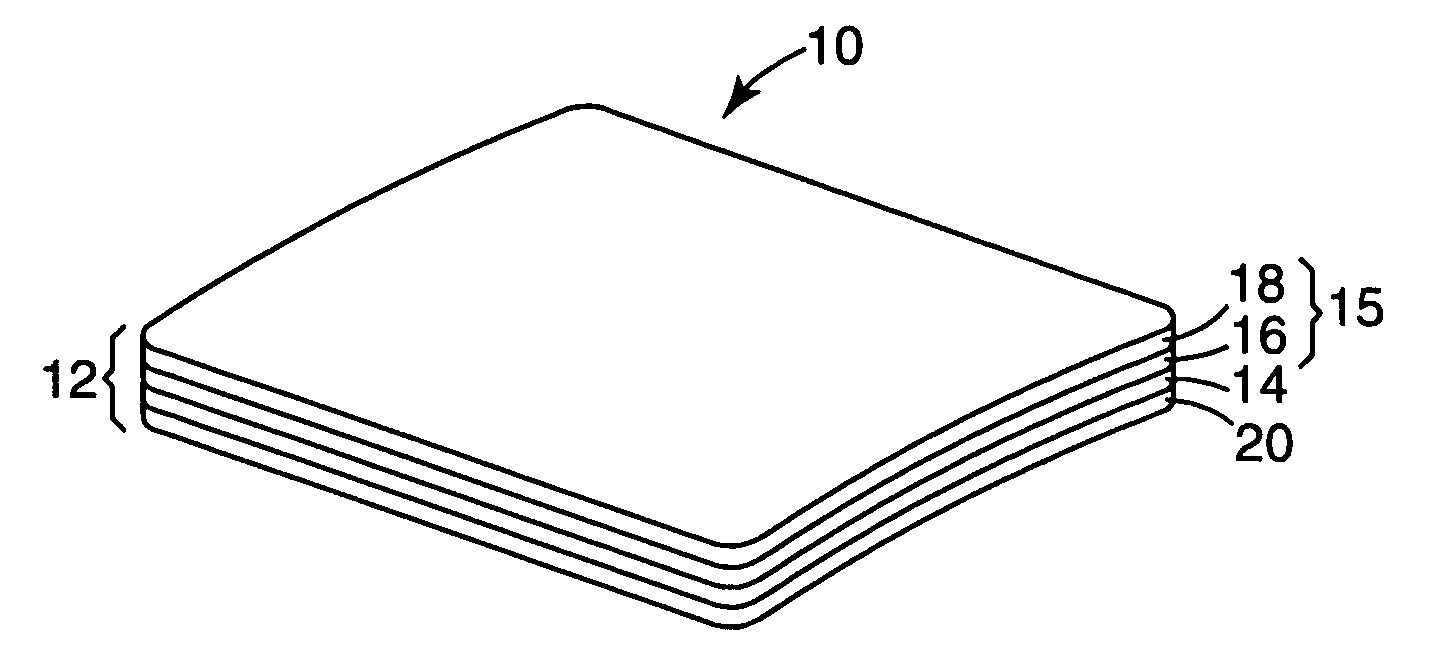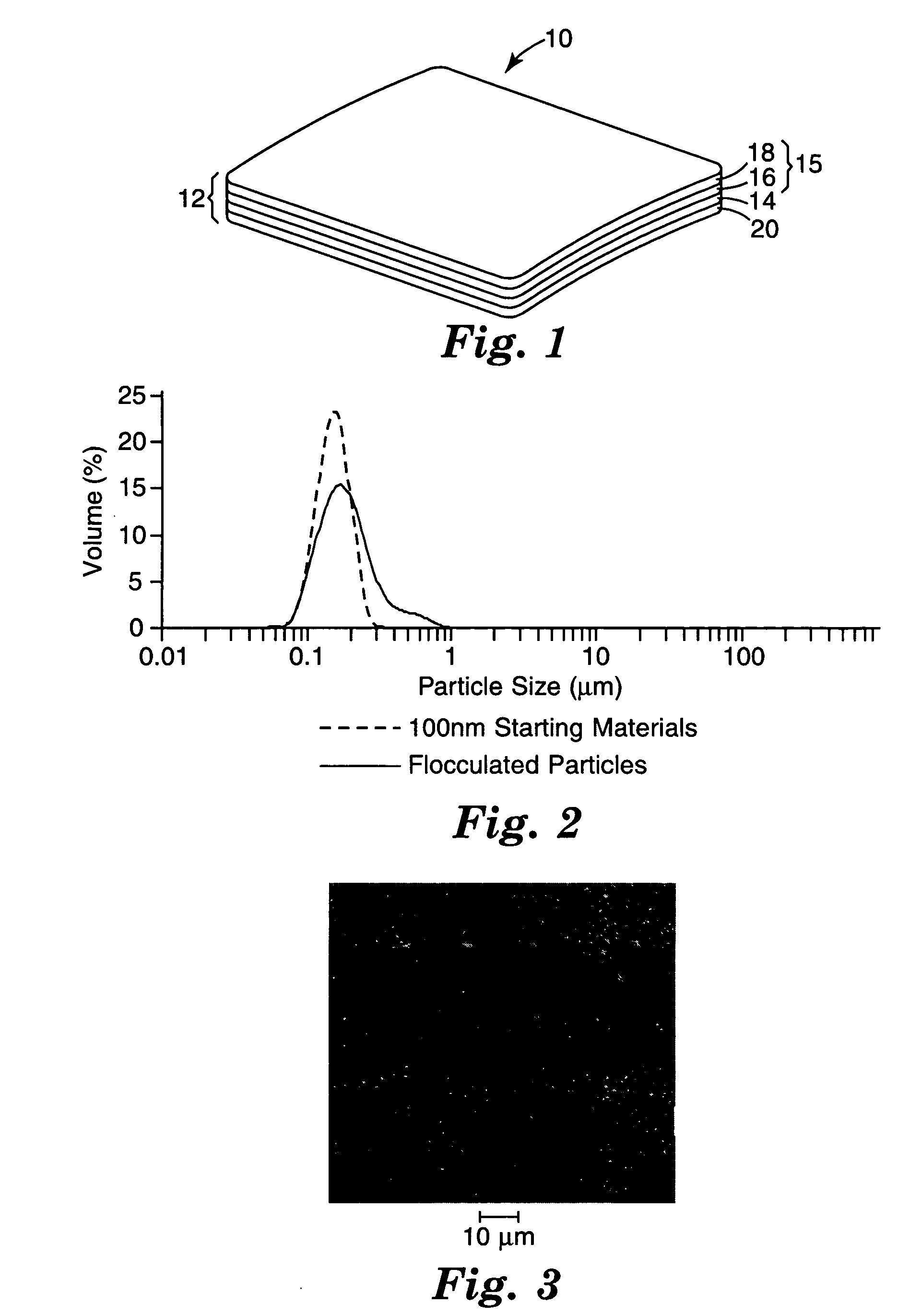Antiglare coating and articles
a technology of antiglare coating and antiglare film, applied in the field of antiglare coating and article, can solve the problems of modifying the surface characteristics, relatively high vacuum deposition technique, and relatively high deposit cos
- Summary
- Abstract
- Description
- Claims
- Application Information
AI Technical Summary
Benefits of technology
Problems solved by technology
Method used
Image
Examples
example 1
[0065] A 3 kg batch of an antiglare coating composition was prepared as follows: In a vessel equipped with a stirring paddle, 34.06 weight % tetraethoxysilane (Dynasil A, Sivento Corp.) was added to 19.45% methyltriethoxysilane (Dynasilan MTES, Sivento Corp.). Stirring was then started and continued throughout the mixing process. 1.83% ethyl alcohol was then added followed by 12.73% of 2-propanol. After 5 minutes, a mixture of 11.31% deionized water and 0.11% sodium acetate trihydrate was added to the above. After 10 minutes, 0.11% concentrated nitric acid was added to the stirring mixture. After a 2-hour reaction time, 13.65% 2-propanol was added. The resultant partially hydrolyzed ethyl silicate solution was then allowed to age for a period of 2 days. After the aging period, 6.75% DP5540 (Nyacol Corp.) (30% 100 nm colloidal silica dispersed in ethylene glycol) was added at a flow rate of 15 ml / minute. The completed coating composition was kept stored under constant stirring. Befor...
PUM
| Property | Measurement | Unit |
|---|---|---|
| size | aaaaa | aaaaa |
| reflectance | aaaaa | aaaaa |
| time | aaaaa | aaaaa |
Abstract
Description
Claims
Application Information
 Login to View More
Login to View More - R&D
- Intellectual Property
- Life Sciences
- Materials
- Tech Scout
- Unparalleled Data Quality
- Higher Quality Content
- 60% Fewer Hallucinations
Browse by: Latest US Patents, China's latest patents, Technical Efficacy Thesaurus, Application Domain, Technology Topic, Popular Technical Reports.
© 2025 PatSnap. All rights reserved.Legal|Privacy policy|Modern Slavery Act Transparency Statement|Sitemap|About US| Contact US: help@patsnap.com


